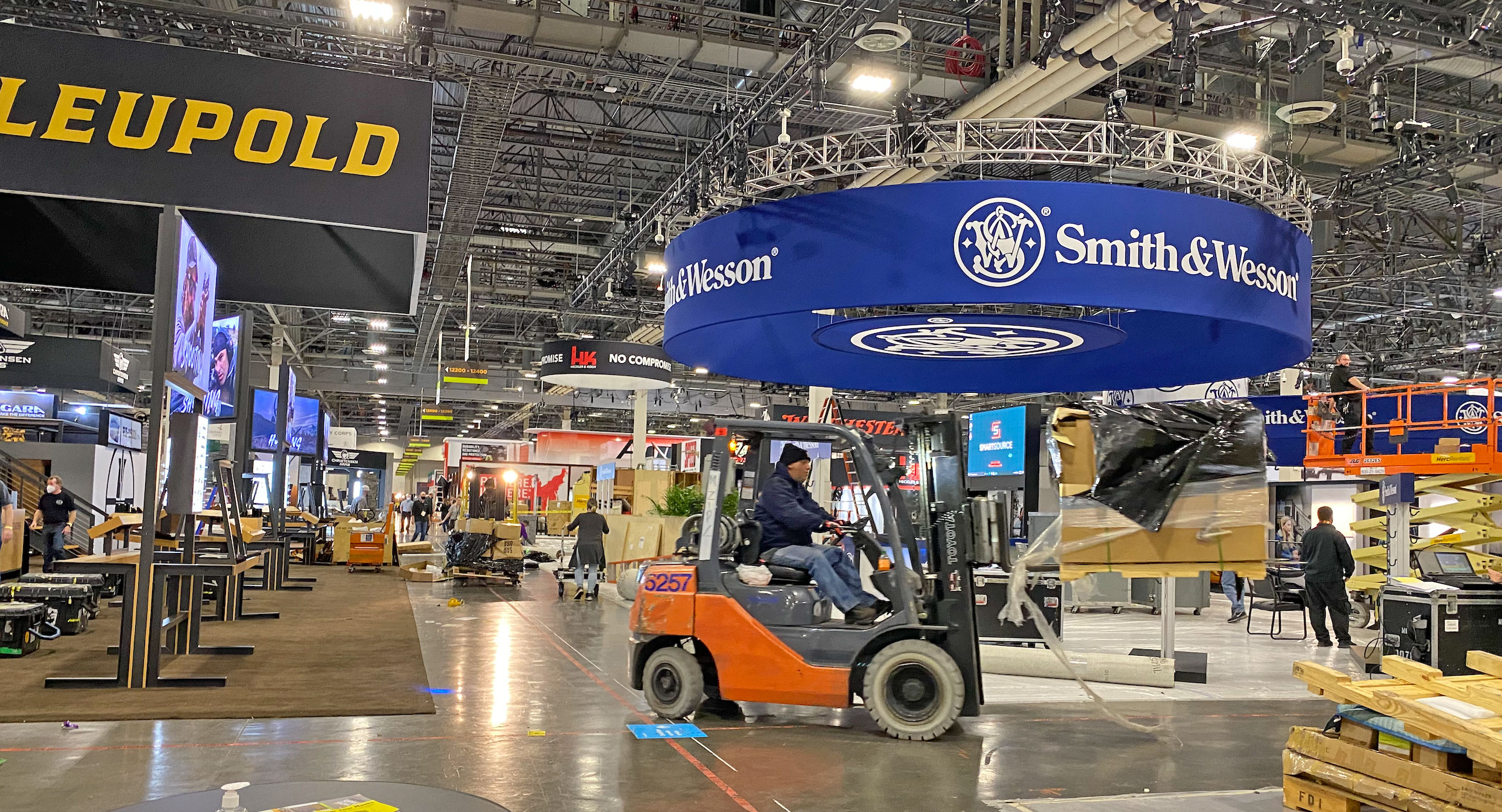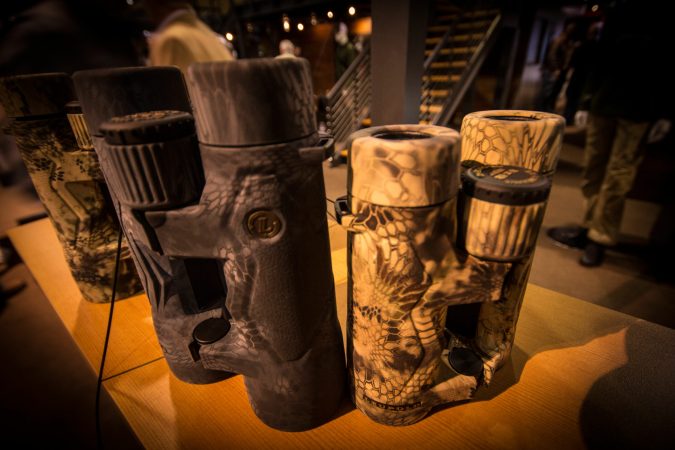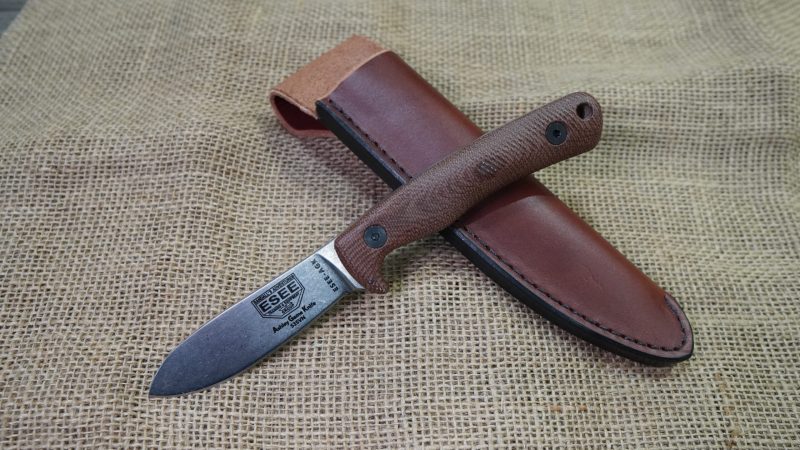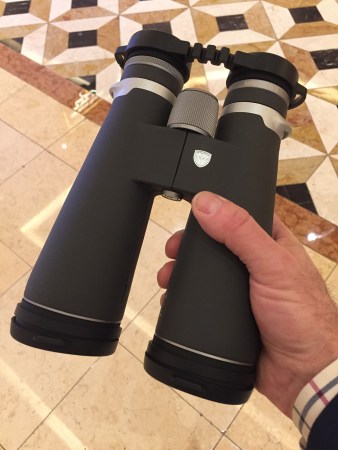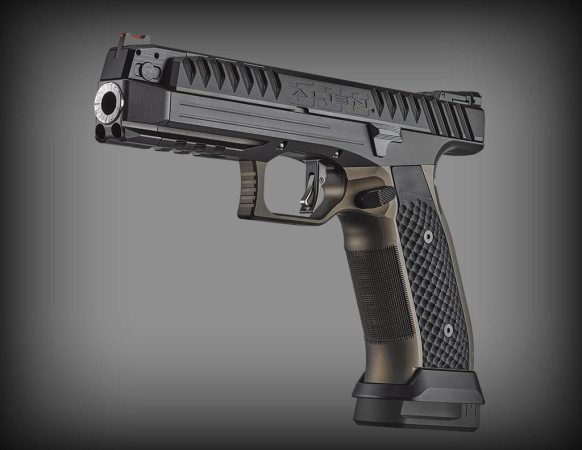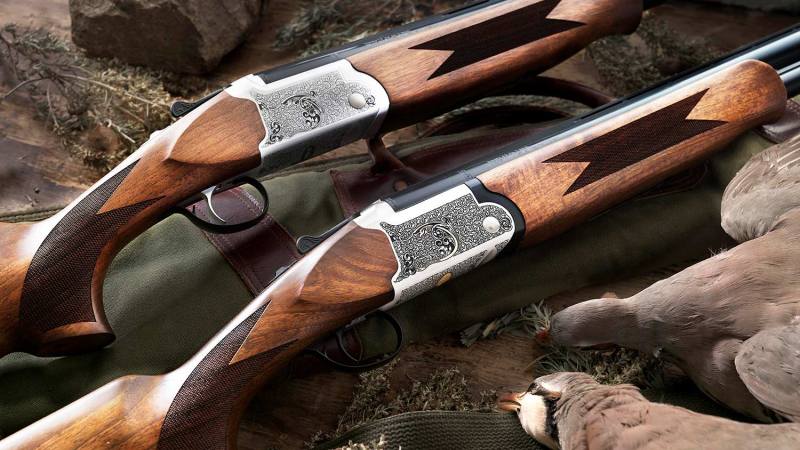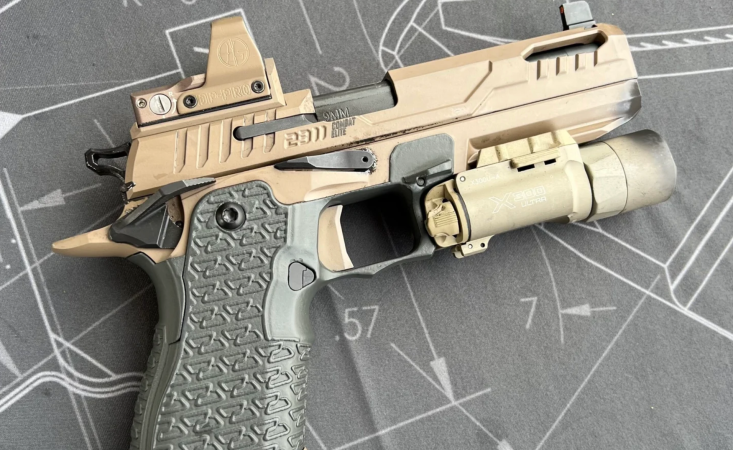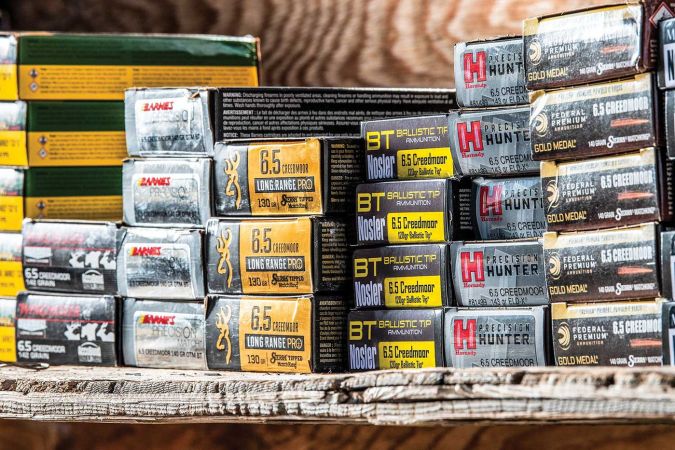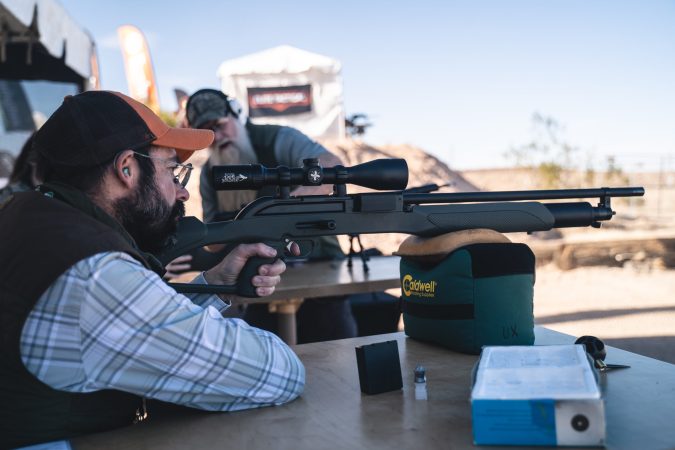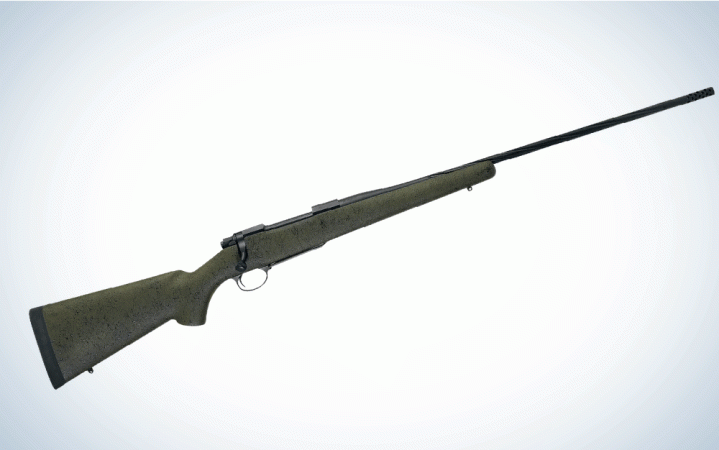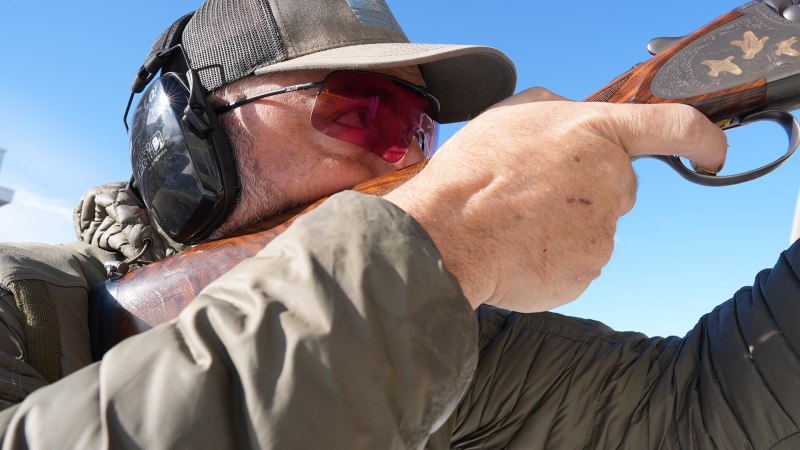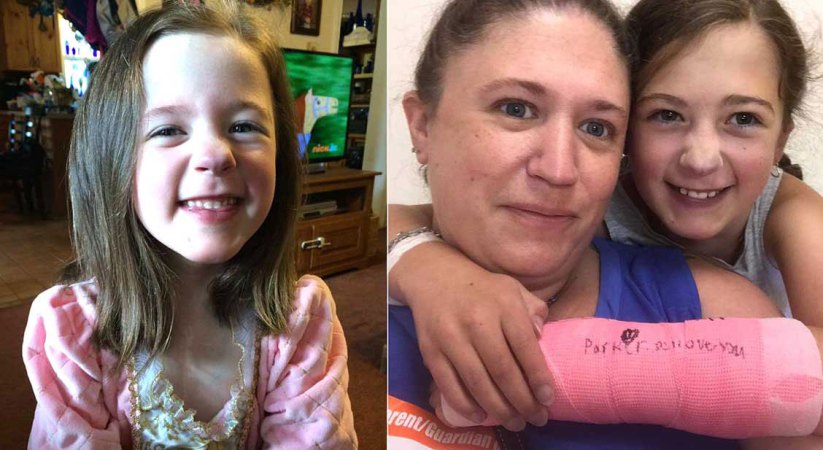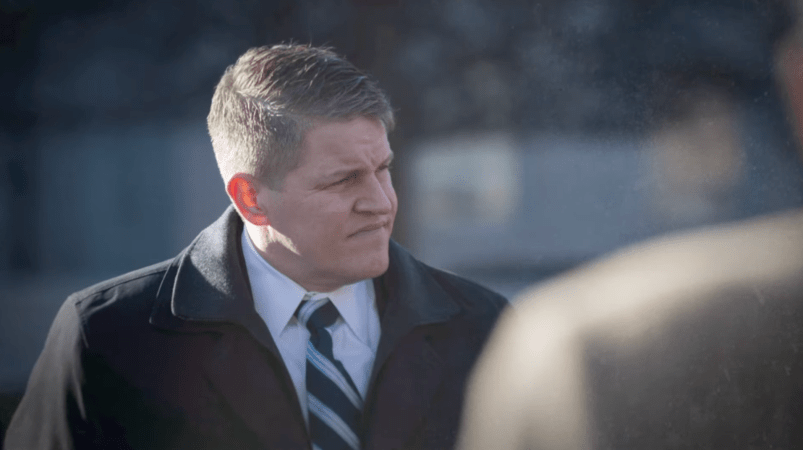We may earn revenue from the products available on this page and participate in affiliate programs. Learn More ›
On Level 1 of the Sands Expo on Las Vegas’s Strip, the booth for Pacific Tool & Gauge was a hive of activity. An employee guided a group of visitors through the process of boring a rifle chamber with the company’s automated reaming machine while others chatted about sales discounts and product-delivery details.
Across the aisle, the lone representative of an Asian optics company sat on a folding chair in a 10×10-foot booth that was bare except for a pile of glossy product catalogs stacked on the floor. He noodled on his phone and never looked up. Next door was an empty booth for Rotchi, a Chinese firearms-cleaning company that wasn’t able to make it to Las Vegas for this year’s SHOT (Shooting, Hunting & Outdoor Trade) Show. Instead of staff or product, the booth contained a cardboard cutout of Donald Trump flashing his trademark double thumbs-up.
Attendance, by the Numbers
The week-long show ended yesterday in Las Vegas. Intended as the triumphant return of the largest gathering of shooting and hunting companies in the world after last year’s SHOT Show was canceled due to COVID-19 restrictions on public gatherings, this year’s running could be described in any number of ways: a surprising success, a tepid disappointment, or proof of the resiliency of the event that has served as the crucible of the outdoors industry since 1979.
All those perspectives would be correct, and most of the estimated 40,000 attendees pointed to evidence in support of their conflicting conclusions.
Some saw in empty booths the failure of the show’s organizers to allay concerns about the pandemic. Others saw an opportunity to take market share from competitors who stayed away. And others saw the show as a bold and welcome return to normalcy.
The faces of show-goers, this year mostly covered up with the masks required by the state of Nevada, could also be read any number of ways. Some were anxious in their first foray into large public gatherings since lockdowns started two years ago. Others were excited to meet friends and return to travel and business dinners and cited the show’s relevance as not only a business booster but as a reason to get together—often face to unmasked face—after a year of social isolation.
Attendance was down this year, confirmed Chris Dolnack, senior vice president and chief customer officer for the National Shooting Sports Foundation, which owns and operates SHOT Show. He says final registration was 43,374 individuals representing 114 countries. That’s about 22 percent below 2020 attendance. Final attendance statistics are not yet available and it’s important to note that many who registered did not actually attend. The Sands Expo center, which is often elbow-to-elbow crowded during SHOT Show, was noticeably less busy than in past years.
A number of the most visible brands in the industry pulled out of the show in the weeks and even days before it opened on Tuesday. Sig Sauer, one of the largest collections of shooting and hunting brands in the business, withdrew their booth, the largest in terms of square footage at the show. Same with Nosler, Ruger, and Vortex, along with dozens of others. On the show floor, the absence of those flagship brands was noticeable in the more open floors and lighter traffic this year. But plenty of attendees noted that they didn’t miss the crushing crowds and long waits at restaurants and bars.
Dolnack describes SHOT as “the gathering of the tribes” and says that by most metrics, this year’s show was a success. “Even being down 22 percent in terms of attendance, we had the most paid exhibitors and the most square footage” of not only previous SHOT Shows, but also of any trade show in Las Vegas. This year’s show boasted 800,000 square feet of exhibit space, largely because of expansion into Caesar’s Forum next door to Sands.
“We finally were able to expand into that space that we’ve been chasing for 10 years,” says Dolnack. “We’re actually pulling off a live show in a pandemic, which I would call a rousing success. But some people want to make the show all about the 100 folks who aren’t here rather than the 2,400 exhibitors that are here.”
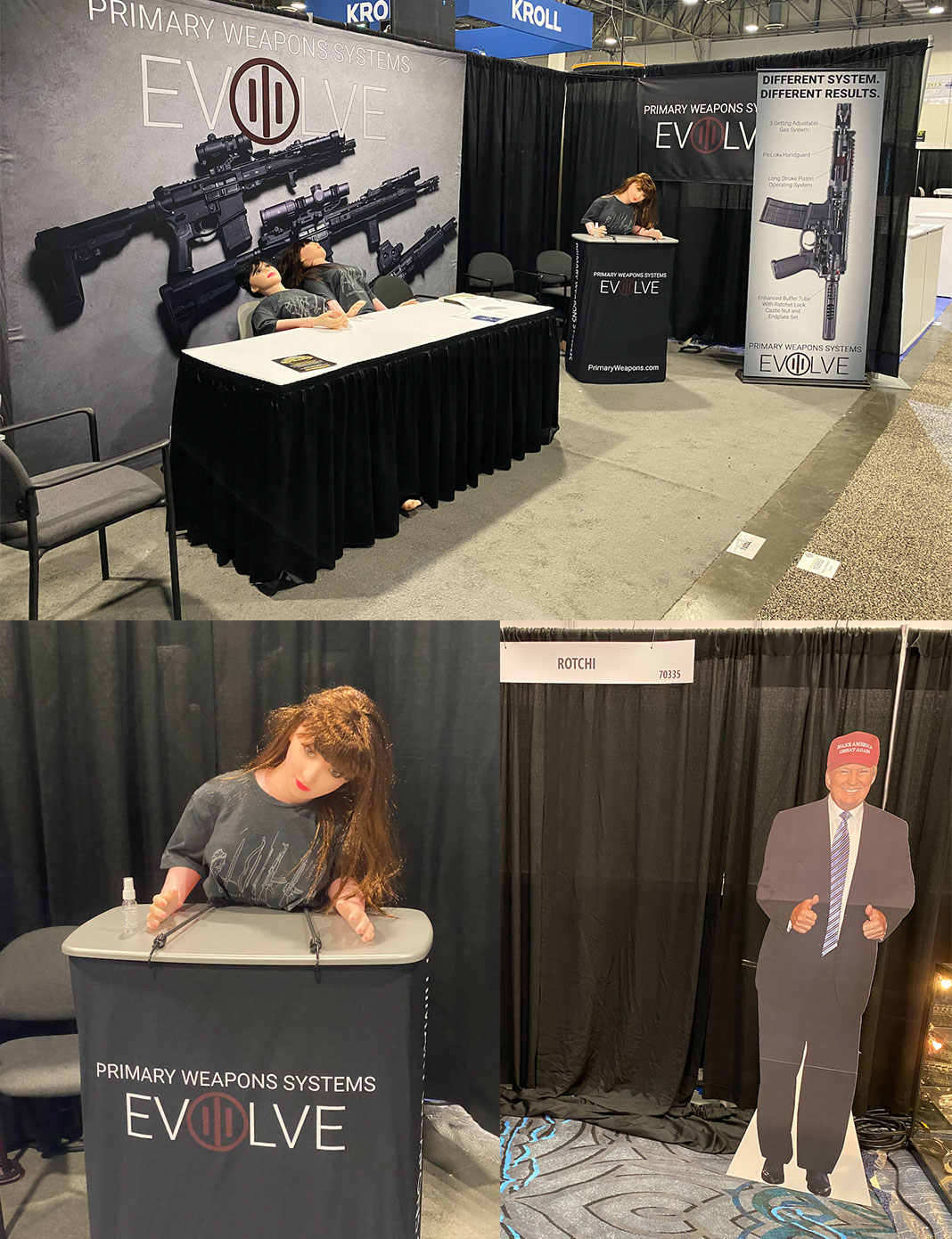
Participation Headwinds
There have been plenty of reasons to stay away, and as the show approached, they seemed to grow in number and magnitude. First was the legitimate fear of getting sick. The omicron variant of COVID-19 was peaking just as attendees started arriving in Vegas. Some were just ending quarantines after contracting COVID-19 at one of the season’s first trade shows, the Archery Trade Association show in Louisville the first week of the month and the Dallas Safari Club show immediately afterward.
“We had one company pull out because they had two employees die after contracting COVID-19,” says Dolnack. “The fear is real.”
The state’s mask mandate kept others away from Vegas, though Dolnack says perspectives on masking are as polarized as any issue in America. Based on pre-show surveys “we knew that somewhere around 35 percent of attendees said they wouldn’t come if masks were required,” says Dolnack. “Conversely, we found that 31 percent of attendees wouldn’t come if masks were not required. So, what do you do?”
For some vendors and attendees, the cost of attendance—not only renting booth space from the NSSF and building and shipping their booths, but also costs to travel to and remain in Vegas for a week—was a deterrent.
Others say SHOT is just a distraction from keeping the throttle down in the hottest gun and sporting goods economy that any have experienced. They don’t need SHOT to drum up business; they have all they customers they can serve, and are struggling to get inventory because of supply-chain bottlenecks.
“A monkey can sell guns right now,” says Scott Grange, who recently retired from 40 years of managing marketing and media relations for Browning and Winchester, both of which did attend the show. “Now, anybody who has been in this business as long as I have knows that won’t always be the case, but right now companies are working as hard as they can just to meet demand.”
But the outdoor industry is changing, and some of the decline in participation at SHOT can be attributed to some brands’ belief that the show doesn’t represent them as much as it once did. Many companies that specialize in traditional hunting—as opposed to those that focus on tactical or paramilitary gear—no longer exhibit at SHOT. They’ve found that “civilian warriors” not only don’t buy their gear, but also represent an entirely different relationship with guns and the outdoors.
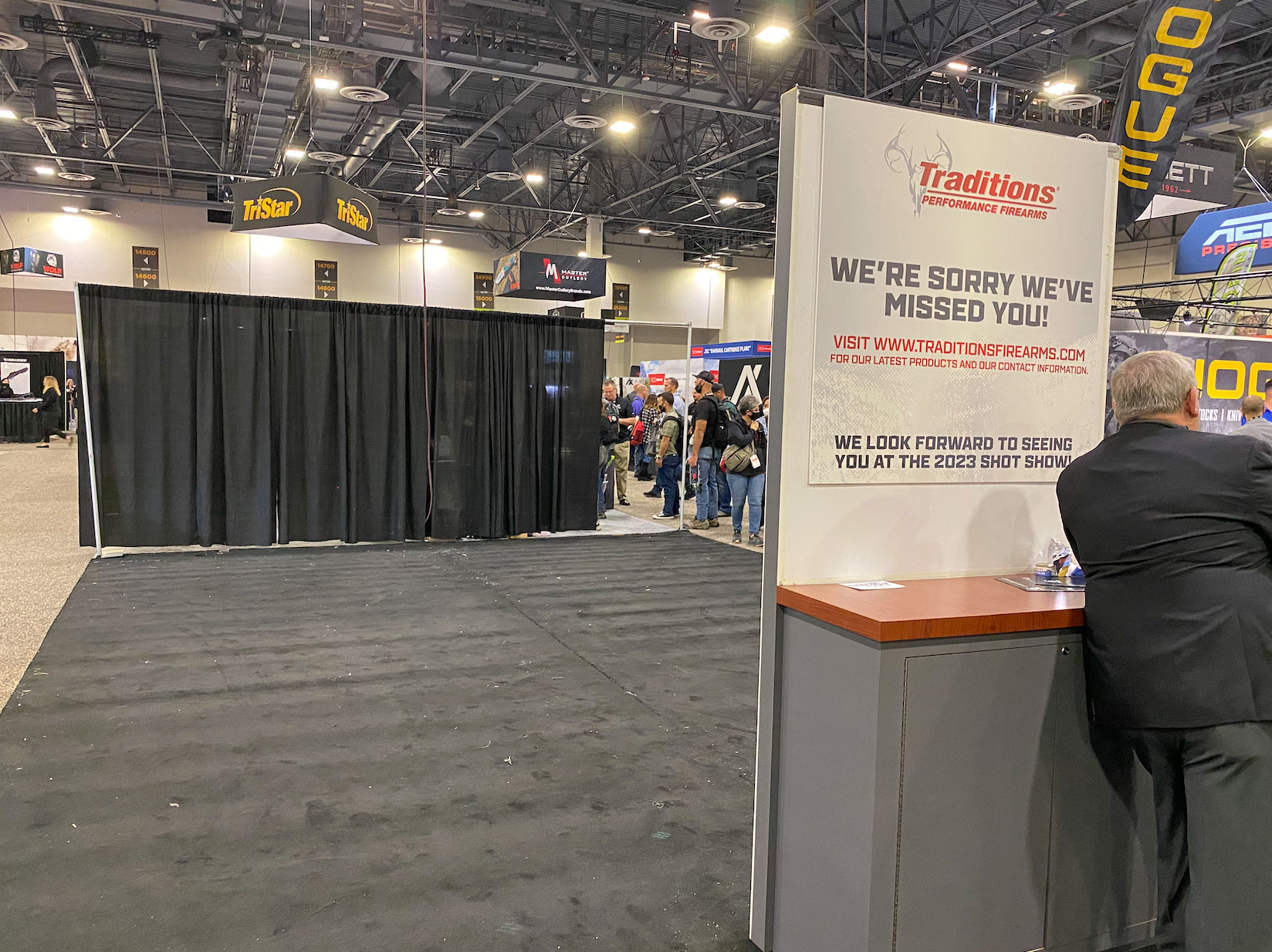
Doing Business Face to Face
If there are myriad reasons to reconsider SHOT, there are just as many that makes the show the foundation of the industry, and many said just being in Vegas was rejuvenating.
“I don’t honestly mind the slightly slower pace,” says James Lawson, vice president of Idea Ranch, an agency that represents a number of brands exhibiting at SHOT. “After more than a year of doing business over Zoom calls, there was a palpable hunger for human connection. I saw it and felt it, but I also think it came through in meetings this week. They were much more conversations and [they] felt much less transactional than in the past.”
Dolnack says one of the most widely cited value propositions of SHOT is the networking. During last year’s lock-downs, the NSSF experimented with delivering the show virtually, using video feeds and collaboration software to connect exhibitors with attendees. Based on feedback surveys, fewer than half of respondents said they’d repeat the experience, even though the virtual show was free.
“People ask why SHOT Show matters,” says Dolnack. “They say we can do everything we need to virtually. But when you’re here, you’re talking to people, you’re learning from other people’s experience, you’re engaging. We have a very tactile audience. People want to try the zippers and feel the stitching in a pack. They want to handle a gun to see the fit and balance for themselves. Hold an optic and determine eye relief for themselves. … Look, this is like the old trappers rendezvous. You have all the trappers coming in from all directions on the compass, and all the hucksters and hangers-on and all the trade that happens around it. You can’t deliver that on Zoom.”
The other reason to have the SHOT Show is because the NSSF—which is the firearms industry’s most powerful and stable organization as the NRA struggles with corruption and litigation—needs it to survive. Dolnack says that SHOT Show revenue is “a huge part” of the NSSF’s budget (he declined to give specific percentages, but noted that the NSSF had to lay off 20 percent of its employees following last year’s cancellation) and that it funds much of the work that keeps the shooting and outdoor industry in business.
The centerpiece of any SHOT Show is the State of the Industry dinner in which NSSF members, typically dressed in evening-wear, hear about the work they’ve funded in the past year. That dinner hasn’t been held the last three years, largely because main-line entertainers are reluctant to perform for the firearms industry, says Dolnack.
“Out of the big five talent agencies, only one would agree to work with us, and some artists and their management didn’t want to work with us because we’re in the firearms industry.”
Despite that, the NSSF’s elevator pitch remains the same, and has even sharpened during this boom time. The NSSF estimates 18.5 million gun sales last year in the U.S., which is the all-time second highest sales year behind 2020’s 21 million sales. Plus, the industry is working to serve more than 11 million Americans who bought their first gun in the past two years.
“We help keep you in business and we help you grow your business,” says Dolnack. “That’s been easy since the pandemic and [2020] election, but people forget that it’s not just about fear and uneasiness with the future. It’s also because we worked to get the gun industry declared essential during the pandemic. It’s because we’ve worked hard on banking reform so that lenders can’t discriminate against gun companies. We’ve been fighting for shooters and hunters at the state level. And it’s because we’ve been diligent about attracting new customers with our [hunting and shooting] recruitment programs. That’s all funded by revenue from the SHOT Show.”
Every firearms and ammunition industry insider we spoke to predicts an imminent slowdown for gun and ammo purchasing. Many expect to see sales plateau, but not necessarily drop off, in the second half of this year.
“Retailers are still selling every box of ammo we can get them,” says one ammunition company executive. “But, it’s taking them a little longer. Maybe before they’d sell a pallet of ammo in hours, now it’s taking them days. You don’t see lines outside the gun stores anymore.”
For shooters and hunters this is likely a good thing. It could mean that by the end of the year they’ll be able to find their favorite ammunition on store shelves again, maybe even at lower prices. But it could spell trouble for less stable brands. During the panic buying boom, any load or firearm sold quickly, regardless of its quality or how well it was marketed. That makes for incredible revenue gains, but it’s an unhealthy long-term position for an industry that’s serving a market which will soon be flooded with product.
“When you start to see rebate deals, you know people are trying to clear inventory and you know it’s over, the bubble has burst,” says one advertising agency executive.
And when the bubble does burst, companies that failed to innovate or recruit loyal customers will struggle. During hard business times, the industry needs a strong NSSF, many insiders say.
“We don’t need to be at SHOT this year, we’re back ordered for months” one firearms company marketing director told us at the show. “But we’re here to support the NSSF.”
The View from Level 1
Back in the basement of Sands Expo, Level 1 where the Pacific Tool & Gauge was doing brisk business, the ceiling seems lower than it is and the dim light makes even pimped-out riflestocks look flat.
This is the cheapest square footage at SHOT, and it’s where many brands and manufacturers get their start. A 10×10 booth costs about $4,000, and if the space doesn’t have the flashy graphics and corporate feel of the flagship brands upstairs, Level 1 feels somehow more alive. It’s a cross between a Middle Eastern arms bazaar and a farmers market. First-time exhibitors chat up their product with infectious enthusiasm. You’re likely to see dogs in vendors’ booths. The mix of companies highlights the rich variety of the industry: finely tooled leather holsters share booth walls with Asian companies that make the diodes that power laser rangefinders and pistol sights. Across the aisle might be a financial advisor who specializes in firearms collectors and next to them a new type of exploding clay target.
Level 1 is where, according to SHOT Show lore and company history, Bill Jordan introduced his new camouflage brand, Realtree, in the late ‘80s. He was so delinquent on his booth payment that he ducked show staff looking to collect. But later in the show, Jordan signed a huge deal with Walmart and paid the final installment of his booth rent with a personal check, achieving escape velocity to join the big brands upstairs in subsequent years. Realtree did not have its usual presence at the show this year.
In one busy aisle, Josselyn Obregon called out to every passer-by, like a midway barker at a state fair.
“Wanna see the best product at SHOT?” hailed Obregon, who is the “manageress” of SPD Magazines of Kerrville, Texas. Then she demonstrated for visitors the line of aftermarket pistol, carbine, and AR magazines made by the company. They feature a crank on the toe of the magazines. Turn it one way, and the follower spring relaxes, allowing shooters to simply drop in ammunition without fighting the spring tension. Release the crank and the follower snaps taut, allowing for normal feeding. It’s a simple product, but it solves a problem that most shooters have encountered at one time or another: the laceration or chafing of your thumb as you load magazines with heavy spring tension.
Will SPD Magazines be back next year? Definitely, says Obregon. Maybe in a larger booth. And she should get the chance. The SHOT Show is contracted in Las Vegas through 2028. And as attendees filed out of the venues yesterday, they were greeted by signs reminding them to book next year’s hotel rooms now “in order to ensure availability.”

